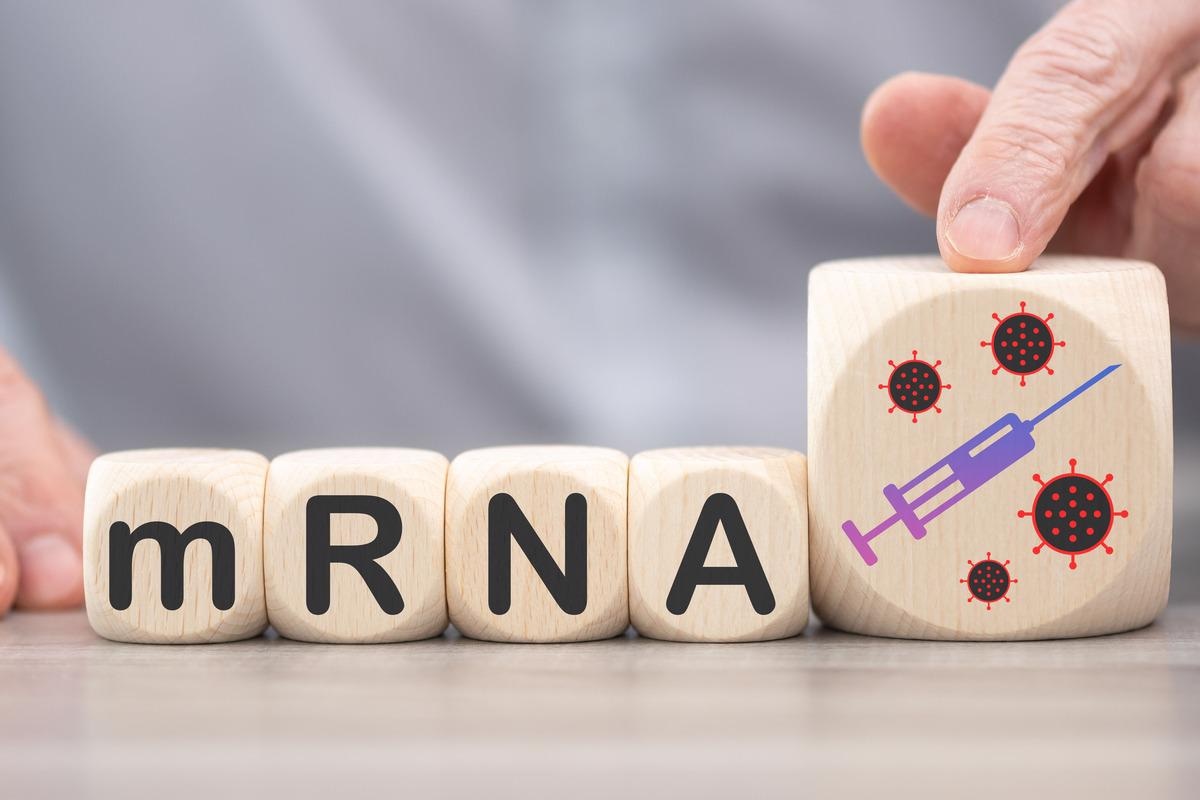They described various routes for successful mRNA delivery into each tissue/organ of the body. Furthermore, the team analyzed the material properties that would help attain successful mRNA expression at the targeted site.
 Study: researchers reviewed the material properties and administration routes that could successfully deliver a messenger ribonucleic acid (mRNA) therapeutic agent to its targeted site. Image Credit: thodonal88/Shutterstock
Study: researchers reviewed the material properties and administration routes that could successfully deliver a messenger ribonucleic acid (mRNA) therapeutic agent to its targeted site. Image Credit: thodonal88/Shutterstock
Background
For the safe and effective biological application of the mRNA therapy, it is crucial to achieve optimum expression of mRNA therapeutics at the appropriate site, be it the central nervous system (CNS), cancerous tumor, or organs, such as lungs, liver, spleen, heart, muscle or skin.
Although transiently, mRNA is rapidly and robustly expressed in most cell types without being delivered to the nucleus of a cell, as it translates intracellularly on ribosomes. This property makes mRNA less prone to insertional mutagenesis than deoxyribonucleic acid (DNA). However, it is less stable than DNA and rapidly degrades in an intracellular environment rich in endonucleases.
Therefore, for many applications of mRNA therapeutics, especially those involving systemic administration, mRNA must be protected via a delivery system for successful delivery to the target site.
To date, most materials successfully mediating intracellular delivery of mRNA are lipids; for instance, the mRNA-based coronavirus disease 2019 (COVID-19) vaccines use a lipid nanoparticles (LNP) formulation incorporating three types of lipids:
i) ionizable lipids for mRNA complexation and endosomal escape,
ii) helper and structural lipids for particle structure integrity, and
iii) polyethylene glycol (PEG)-lipids for conferring stability to the formulation.
Biological applications of mRNA therapeutics
mRNA is particularly well-suited for viral and cancer vaccines; accordingly, a billion doses of mRNA-based COVID-19 vaccines, including mRNA-1273 and BNT162b, have been administered globally. Additionally, novel lipid-based approaches are under development for improved vaccines. For example, self-amplifying mRNA (SAM) is emerging as a potent delivery cargo for far more effective genetic vaccines.
Within the oncology space, mRNA therapeutics-based approaches that have shown promise in animal models include the tumor immune microenvironment (TIME) and chimeric antigen receptor T-cells (CAR-T). For TIME, poly (alpha and beta-amino ester)-based materials have shown promising results in animal models. Likewise, genetically engineered T cells CAR-T could be transfected in primary human T-cells ex vivo and kill tumor cells.
For applications requiring mRNA delivery to the lungs, the study highlighted cationic particles loaded with mRNA tend to have higher accumulation and protein expression in the lungs. For penetrating the deep lungs, microparticles greater than five μm with densities less than 0.4 g/cm3 were seemingly more effective than smaller dense particles. Furthermore, lipids, polymers, and lipid-polymer hybrid platforms have all shown strong expression in the lungs following systemic administration.
The subcutaneous and intradermal regions of the skin are potent targets for mRNA applications as they present a conducive environment for controlled drug release. Consequently, subcutaneous administration of mRNA vaccines has outperformed systemic administration in eliciting an immune response, although it is highly dependent on the delivery material and resident cell type. The subcutaneous route of administration has also shown promise for protein replacement applications of mRNA therapies.
Lescan et al. used an intradermal ex vivo administration of lipofectamine-containing mRNA encoding for elastin and found a 20% increase in elastin production in a porcine skin model. Likewise, Gan et al. developed a modified mRNA-encoding vascular endothelial growth factor A (VEGF-A) for type-2 diabetics.
Conclusions
The current study presents a thorough meta-analysis of the distinct properties of the materials that could successfully target different organs for mRNA delivery. Additionally, it comprehensively reviewed various routes of administration of mRNA therapeutics and all the possible applications of mRNA gene therapy.
However, for the successful implementation of mRNA gene therapies, the material properties that influence tissue localization and cellular expression must be fully understood. Similarly, it is imperative to establish the most efficient route of administration based on the desired application for the mRNA therapeutic.
Therefore, continued research is required to attain the highest potential of genetic therapies in the fight against a wide variety of cancers, and infectious diseases, including COVID-19.
Novel LNP formulations and biomaterial engineering innovations, including ionizable lipids, could help further optimize mRNA-based COVID-19 vaccines. Similarly, microneedle array patches could help in the painless administration of vaccines. All these approaches would further improve the effectiveness of mRNA vaccines, broadening their accessibility and reducing costs.
Although delivering vaccine nanoparticles into the muscle or skin is generally effective, a genetic vaccine specifically targeting antigen-presenting cells for improved T cell responses could be the next-generation COVID-19 vaccine.